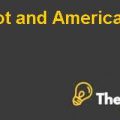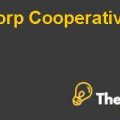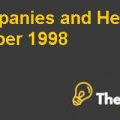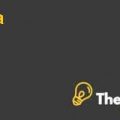Heineken Case Study Solution
Operating in a competitive environment has its own challenges and when an organisation gains the size of a world leader, it requires integration of its functions in order to have enhanced capabilities and coordination between processes. Heineken is one ofthose organizations which is still relying on its legacy system which relies on an internet connection and there is a need to implement an integrated supply change management system at the organisation. While there are advantages in using the legacy system which has brought about substantial achievements in the form of cost savings and improvements in processes, the need tomove ahead with the competitive environment have made it clear that relying on the legacy system will not let Heineken attain its desired leadership in the beer industry. The beer industry currently has various players while it has a rather competitive environment where players need to have strategies which can embed their position in terms of giving them a high bargaining power. While this type of change is a technological change in its true sense, it will require a major change management initiative at Heineken since there are risks associated with bringing about a change that affects the stakeholders of a company.
Introduction
Heineken is looking for a strategy for enhancement of its current processes so that it can achieve the position of leadership in the beer market. The following analysis looks at the organization’s current strategy, an evaluation of its internal and external factors, and a thorough analysis of its legacy system and then recommends the implementation of a supply chain management system. The change management process that would be encountered in this situation has been discussed and the need for change has been justified.
The organization’s strategy
Heineken’s goal is to be competitive in the worldwide beer market in terms of being the world leader. The management is not just focusing on increasing the sales or profitability of Heineken and neither is it just focusing on external and internal growth. The prime focus is market leadership in terms of being the best in the market and a strategy of accomplishing this goal is being evaluated.
For achieving this position, Heineken is looking for enhancement in its current operations. Currently it depends on an internet based system for managing its supply chain. The players in this scenario are the distributors, Heineken’s management, and the retailers, the competitors against which Heineken is competing in the international and local market, the customers and the employees.The infrastructure of Heineken can be studied using Porter’s Value Chain model (Stimpson, 2010) (appendix 1).
As per Porter’s Value Chain analysis Model, Heineken is handling its primary activities in the form of inbound logistics, operations, marketing and sales on its own while the primary activity of outbound logistics or distribution is being handled by distributors.
Heineken is engaged in its own activates of production and has a major focus on keeping the system for supply chain as its main focus. This means that they want to be self-reliant in the matters of information systems through their supply chain management. Currently their information technology requirements are being fulfilled through the internet and Heineken itself does not have an integrated system for internal or external logistics. Administration in the form of human resource management and day to day operations in the data center are also managed internally.
Enterprise Analysis
The following enterprise analysis has been done using a simple technique of SWOT analysis (Stimpson, 2010) which highlights the strengths, opportunities, weaknesses and threats of an organisation. This internal and external analysis would highlight the analysis needs of Heineken from where we can move on to the evaluation of its legacy system and whether it fulfills those needs.
Strengths:Being the world’s second largest brewer makes Heineken one of the strongest players in the beer market. With ownership in 110 breweries, it can be said that Heineken is in a substantial position in terms of risk aversion. In terms of its presence worldwide, Heineken has products available in 170 companies which means that it does not have dependency over the US market only. Heineken’s position in Europe has made it a leading brand in Europe and the area accounts for two thirds of its sales.While these strengths have already highlighted how the brand is doing well worldwide, its position is further strengthened by its headquarters in New York and offices in Los Angeles and Atlanta. With an established base in the US in the form of a headquarter which focuses on variable functions such as administration, operations, finance, sales and marketing and a data center for day to day operations, Heineken is a large well organized entity.
Weaknesses:Despite the strengths that have made Heineken a prominent and influential player in the beer industry, there are certain areas which need further improvement for establishing Heineken’s name as the world’s largest brewer. Currently the biggest threat that Heineken faces is from its competitor Grupi Modelo’s Corona which currently holds the first position in the beer industry.Currently Heineken is basing its inventory management and coordination on an internet based system. While this provides ease of order processing and has provided substantial advantages, there is no direct coordination in the supply chain. Heineken’s distributor system is prone to human error in certain cases and requires a manual review and entry of changes to the current inventory or supply requirements. The legacy system of ordering has certain limitations which are preventing Heineken from reaching its full potential...............
This is just a sample partial work. Please place the order on the website to get your own originally done case solution.













